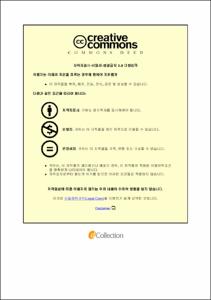초기 집합조직과 변형조건에 따른 AZ91 마그네슘 합금의 고온 변형 중 집합조직 형성거동
- Abstract
- Magnesium alloys were limited by poor formability at room temperature which was caused by the limited number of slip systems. The texture control plays an important role in plastic workability of magnesium. Many studies have been conducted in order to understand the texture evolution in magnesium alloys.
Two authors report the characteristics of texture formation deformation became clear with an increase of solute content during high-temperature deformation in Al-Mg alloys. Therefore, it is expected that the similar characteristic appears in AZ magnesium alloys with the solute and solvent element replacement relationship at high temperature deformation. Also, in previous study, the formation behavior of texture and microstructure in AZ80 magnesium alloy under high temperature deformation was investigated. It was found that the basal texture was formed at stress of more than 15-20MPa and the non-basal texture was formed at stress of less than 15-20MPa. This means that stress of 15-20MPa is the change point of deformation mechanism.
This study, AZ91 magnesium alloy with 9% aluminum concentration was experimentally investigated by uniaxial compression test. Uniaxial compression is conducted at 723K with a strain rates of 0.0005s-1 to 0.05s-1. Texture measurement was carried out on the compression planes by the Schulz reflection method using nickel filtered CuKα radiation. EBSD measurement was also conducted in order to observe spatial distribution of orientation. As a result of uniaxial compression deformation, the maximum value of the flow stress is observed in all the cases at the true stress – true strain curve for three type of specimens. Also, on texture measurement, it was found that the main component of texture and the accumulation of pole density vary depending on deformation condition. A crystal orientation component after deformation is formed by continuous formation behaviors.
- Issued Date
- 2020
- Awarded Date
- 2020. 2
- Type
- Dissertation
- Publisher
- 부경대학교
- Affiliation
- 부경대학교 대학원
- Department
- 대학원 마린융합디자인협동과정
- Advisor
- 김권후
- Table Of Contents
- 1. 서론 1
2. 이론적 배경 4
2.1 집합조직의 개념 4
2.2 결정방위의 표현 7
2.3 금속의 재결정 12
2.4 마그네슘의 소성변형기구 14
2.4.1 슬립변형 14
2.4.2 마그네슘의 슬립계 17
2.5 결정방위 제 21
3. 실험방법 23
3.1 시료 준비 23
3.2 열간압연 및 평면변형압축 시험편 제작 23
3.3 고온평면변형압축 실시 28
3.4 미세조직 및 결정방위 측정 30
4. 실험결과 및 고찰 33
4.1 진 응력 – 진 변형률 곡선 33
4.2 미세조직 관찰 34
4.3 정극점도를 통한 방위 변화 관찰 38
4.4 ODF를 이용한 주성분 변화 관찰 42
4.5 초기 집합조직과 변형속도가 집합조직에 미치는 영향 45
4.5.1 변형속도가 집합조직에 미치는 영향 45
4.5.2 초기 집합조직이 변형 후 형성된 집합조직에 미치는 영향 51
5. 결론 52
참고문헌 53
- Degree
- Master
- Appears in Collections:
- 대학원 > 마린융합디자인협동과정
- Files in This Item:
-
-
Download
 초기 집합조직과 변형조건에 따른 AZ91 마그네슘 합금의 고온 변형 중 집합조직 형성거동.pdf
기타 데이터 / 2.05 MB / Adobe PDF
초기 집합조직과 변형조건에 따른 AZ91 마그네슘 합금의 고온 변형 중 집합조직 형성거동.pdf
기타 데이터 / 2.05 MB / Adobe PDF
-
Items in Repository are protected by copyright, with all rights reserved, unless otherwise indicated.